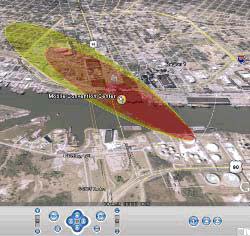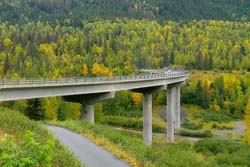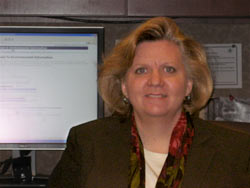On Change
Thursday, January 15th, 2009Marcus Peacock is EPA’s Deputy Administrator.
My mother was born two weeks before Lindbergh crossed the Atlantic. She has witnessed amazing changes in her life: the advent of air transportation, the proliferation of television, the near eradication of scourges like small pox and polio, men walking on the moon, the internet. Yet when I asked her how she felt about these changes, I did not get the response I expected. She shrugged. “Yes, things have improved a lot.” That was it.
Deep in middle age, I now understand that answer. The time scale our brains work with is easily swamped by the broader march of technology. After a dash of initial wonder, we just assimilate advances and move on. A few decades ago, every Christmas Day my family would crowd around a phone in our house and have hurried static-filled ‘long distance’ conversations with relatives in other lands. Two weeks ago one of my kids got a call from a friend. My daughter was walking in the woods. Her friend was sitting in a cafe in Florence, Italy. This does not amaze them. It no longer amazes me. In fact, I can’t really remember how we got to this place. It just happened.
Today the Administrator signed a proposed rule modifying how EPA determines the Air Quality Index for fine particle pollution. As proposals go, it is not terribly notable. And yet . . . this will be the first proposed rule issued by a federal agency that will allow the public to comment on the rule using a blog. The blog will be open from March 2 to March 11 which corresponds to public hearings on the proposal. Stay tuned to Greenversations for more information on how to participate. Mark it as a small step on the way to what I believe will be a dramatic change in the way the federal government crafts rules and regulations. A small step, but one that, with others, will accumulate to the point where the government will be able to produce better quality rules much more quickly than in the past.
We live in the Information Age. It is sweeping over us like advancing waves on a beach. Federal agencies can either seize the tools that are coming from this change or just let the tide pick us up and deposit us in a new place. EPA is choosing to seize the day. We are not doing this because we want to amaze people with whiz-bang Web 2.0 technology. We do this because when someone in the future is asked about the changes they have seen in the environment, they will just shrug their shoulders and say, “Yes, things have improved a lot.”

 At an evening session, I saw a demonstration of something called
At an evening session, I saw a demonstration of something called  Individual rights have certainly been in the news lately. From the Olympic Torch being doused in France in protest of suspected human rights abuses in China, to the Supreme Court reviewing the DC gun ban in light of the Second Amendment, to the continuing struggle to balance an individual’s right to privacy against the safety of the general public in a post-911 world, one can hardly read a newspaper these days without seeing an article about rights. This makes sense as we are a nation built on rights. The rights of the individual are crucial to our way of life and the backbone of democracy.
Individual rights have certainly been in the news lately. From the Olympic Torch being doused in France in protest of suspected human rights abuses in China, to the Supreme Court reviewing the DC gun ban in light of the Second Amendment, to the continuing struggle to balance an individual’s right to privacy against the safety of the general public in a post-911 world, one can hardly read a newspaper these days without seeing an article about rights. This makes sense as we are a nation built on rights. The rights of the individual are crucial to our way of life and the backbone of democracy. I also attended the Exchange Network National Meeting and invited these participants to not only join in the Dialogue, but also to listen and learn with us. The
I also attended the Exchange Network National Meeting and invited these participants to not only join in the Dialogue, but also to listen and learn with us. The  As the Agency’s CIO, people ask me questions all the time. And some of the time they are questions that any good steward of the environment should know the answer to. Or at least, know how to find the answer.
As the Agency’s CIO, people ask me questions all the time. And some of the time they are questions that any good steward of the environment should know the answer to. Or at least, know how to find the answer.